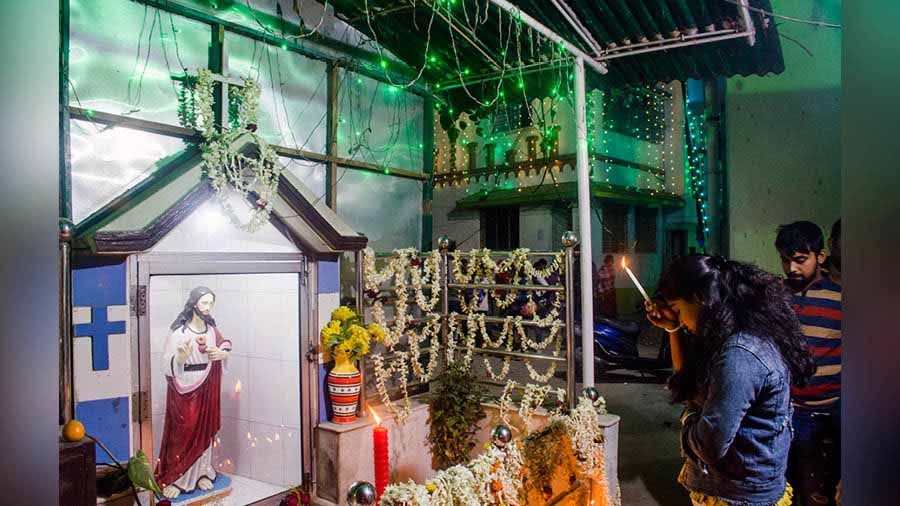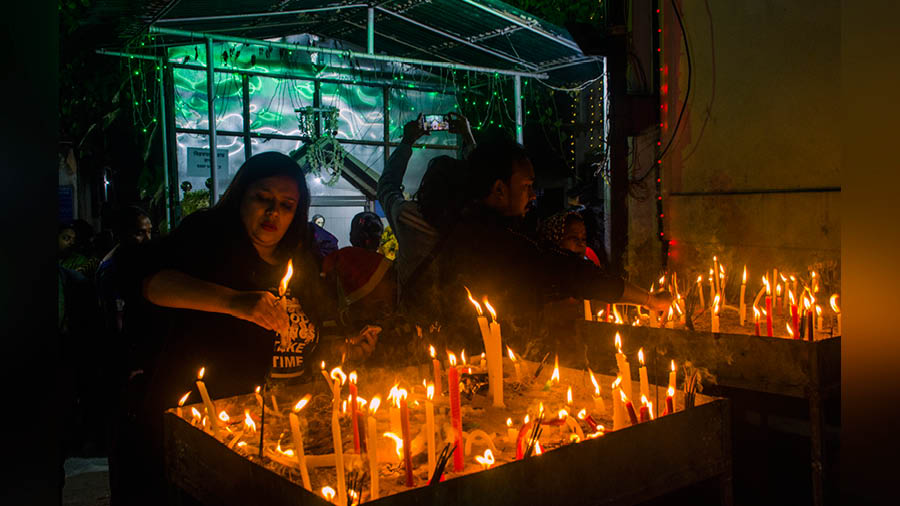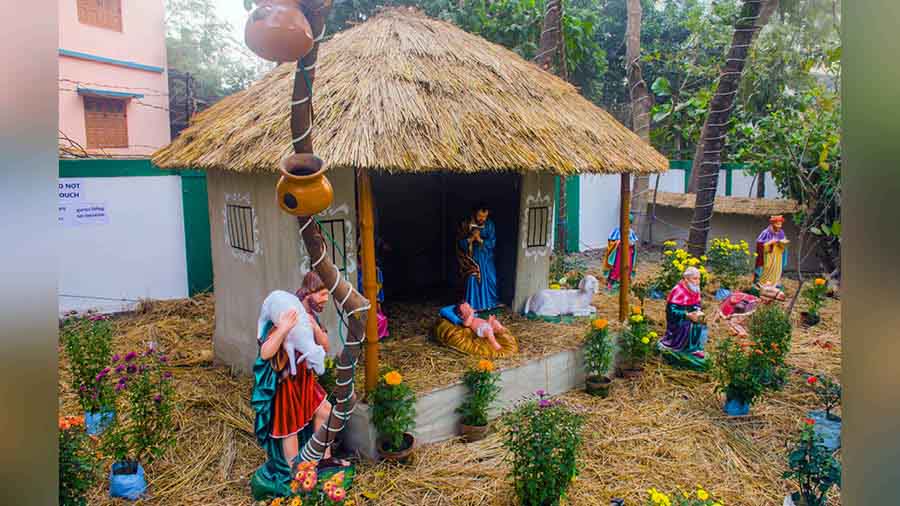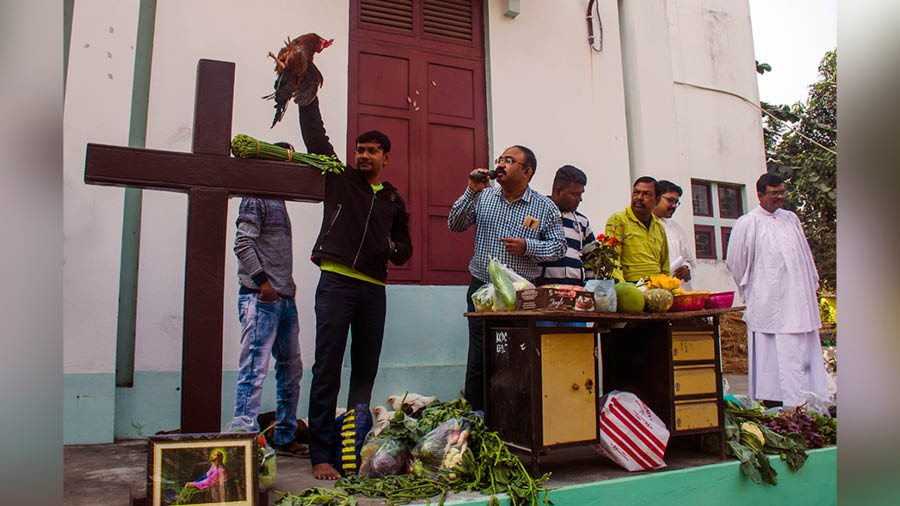It is Christmas evening. Hundreds of people walk beneath a canopy of fancy lights past festive decorations of the nativity scene and a giant Christmas tree. This isn’t Park Street or Bow Barracks but the North 24 Parganas neighbourhood of Kestopur — possibly one of the most unlikely places for Christmas celebrations in Kolkata. But unknown to many, this neighbourhood in the eastern fringes of the city does have a significant Christian population and even have localities with names like Christianpara and Mission Bazaar.
It began with a storm and a love story
The Christian history of Kestopur dates back over two centuries and the story began with a violent Nor’wester or Kalbaisakhi in April 1806. The storm had a devastating effect and a total of 47 mercantile ships were affected. Of the 47, only five ships weathered out the storm and were pushed to the mouth of the Bidyadhari River. Survivors from the five heavily damaged ships, belonging to Dutch, Portuguese and English merchants, made a landing in the area near present day Kestopur.

A devotee lighting a candle at Emmanuel Church on Christmas
With the help of locals, they built temporary shelters to protect themselves from the surrounding wildlife and settled there. In the meantime, a love affair developed between a local 18-year-old Hindu Brahmin boy named Narpit Singh and a 14-year-old Portuguese girl named Catherine. They eloped and travelled all the way to Benaras. They returned in 1818 and started preaching the gospel among the locals. Soon, the Emmanuel Church was established and it was opened to the public on February 26, 1829.
The building of a community

Devotes light candles at Emmanuel Church
The Emmanuel Church still stands although its age-old building has been replaced with a modern structure. Today, it is an active Protestant church under Churches of North India (CNI). Kestopur also houses a Roman Catholic church known as Holy Family Church. The two-century old structure of this church has also been replaced with a newer building. There is a third church belonging to the Assembly of God Church in the neighbourhood and several private places of worship for the Christian community, which has grown with the real estate boom and subsequent increase of population in Kestopur. The centuries-old old churches got too small to accommodate the growing number of members and larger, modern structures were built to replace the older church buildings.

A nativity scene installation at the Emmanuel Church compound
Today, apart from the regular Sunday service in Bengali, the churches have also introduced English service. This is done mainly to cater to the non-Bengali Christians working in the IT hub who live in the Kestopur region.
Christmas traditions
During Christmas time, the entire neighbourhood gets involved in celebrations that span over a month. Among the many traditions and events is a strange auction that takes place at the Emmanuel Church. The auction has historical roots and a connection to an old harvest festival. Kestopur used to be an agricultural hub and during that time, members would bring in freshly harvested paddy and vegetables from their fields along with fresh catch from the nearby bhanris. The harvest would be put up for auction and the money collected went to the church fund.

A chicken being auctioned at Emmanuel Church
Today, the auction still happens usually on the second Sunday of December. Since the agriculture fields have long been replaced by apartments, the vegetables and fishes no longer come fresh from fields and the bhenris. Many other items have been added to the list of auctionable items over the years and the element of fun still exists with live poultry being auctioned along with Joynagar Moa.
The midnight mass on Christmas Eve also has a local element with Jishu Kirtan being sung with musical instruments like khol, kartal and khanjani. The morning mass on Christmas Day also has its share of Bengali songs, which are usually accompanied with a harmonium. The evenings are festive times with the entire local population joining in the celebration. The existing grottos are decorated and lit up and installations are put up depicting the birth of Christ.

The ‘Matri Dham’ installation
This year, one of the installations called ‘Matri Dham’ (Temple of the Mother) had a girl posing as mother Mary sitting in front of a model of the newly born Christ. Next to her a boy posed as a guard in Bethlehem and was dressed in a turban and carrying a spear. His attire resembled more of a lathial in a Bengal zamindari than a guard in far-away Bethlehem. There are several of these makeshift models all through the locality and people, irrespective of religion, stop in front of them to light candles and incense sticks and the ritual is finally completed with clicking selfies and groupfies.


